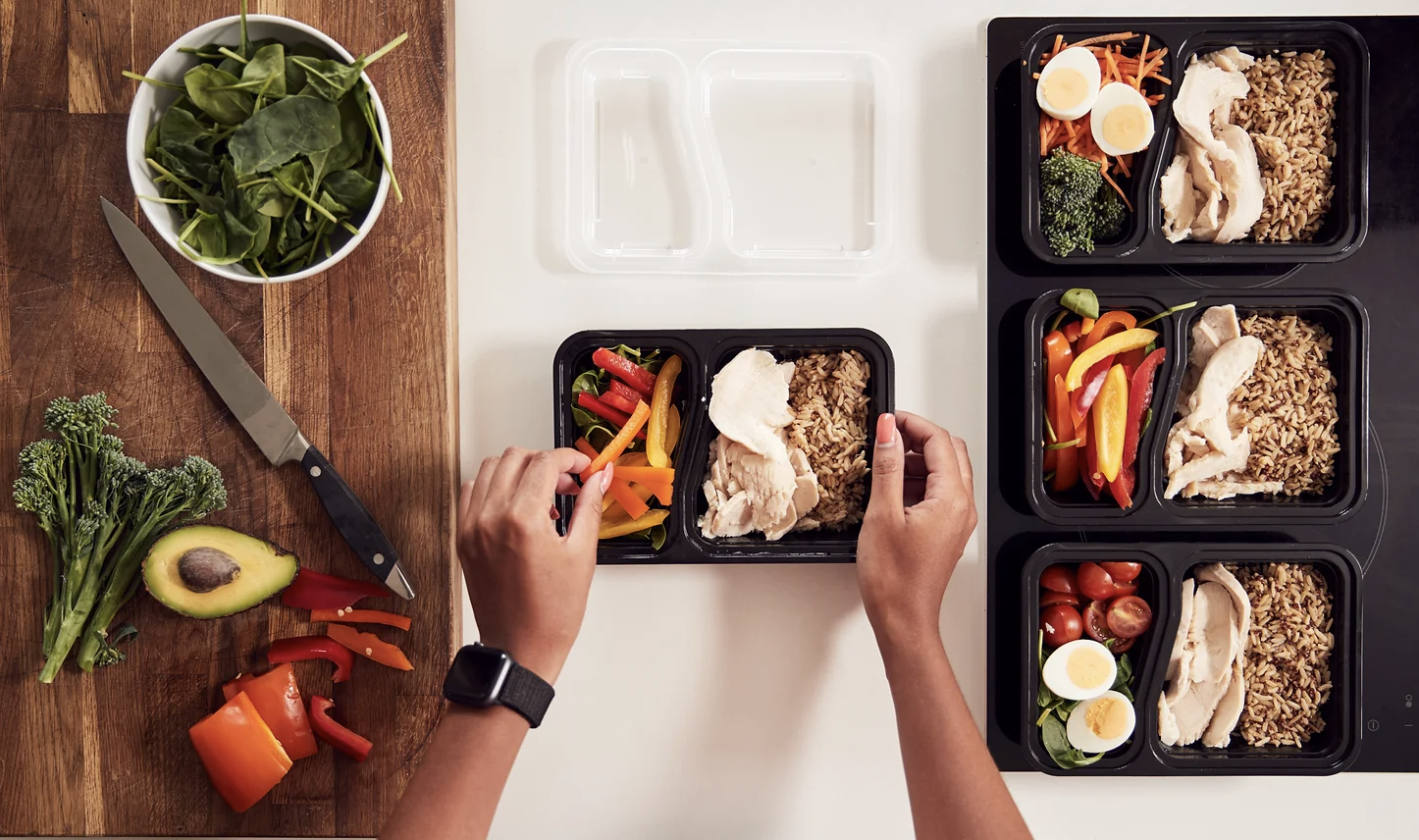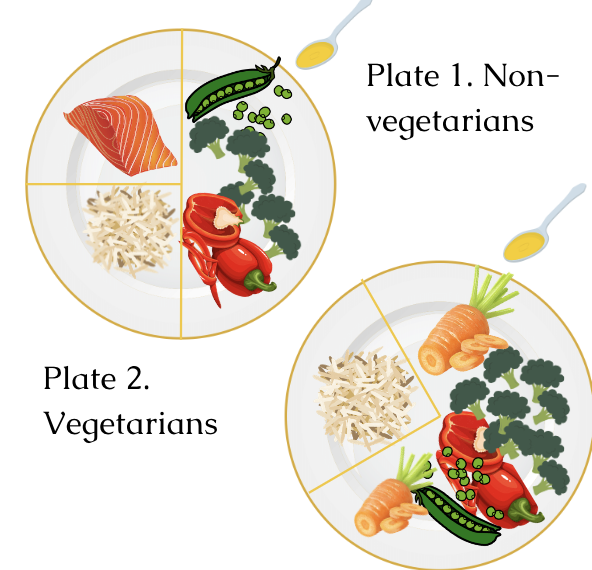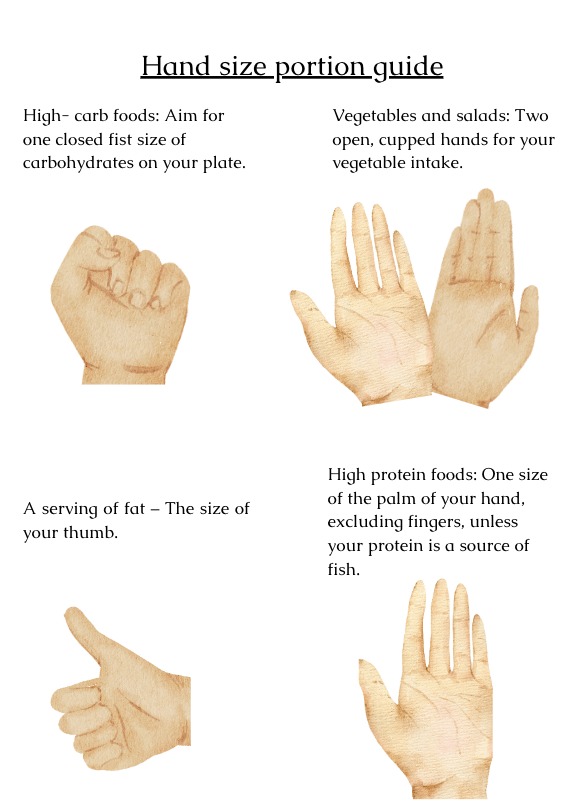Is my portion size correct?

Increased portion sizes could be one of the contributing factors to the rise of obesity (1) significantly in the last 30 years. It’s hard to sometimes know if we’re plating up the right portion sizes for us as, there are many contributing factors that influence how much we eat during the day like our energy expenditure, hormones and emotions.
Rather than being rigid around your portion control (i.e. measuring your quinoa right down to each grain, and counting calories) as this can create feelings of restrictiveness, instead, it’s a good idea to have a better understanding of how to balance your plate and what that looks like and also introduce mindful eating techniques, lets deep dive into both of those now.
What does a balanced plate look like?
When thinking about what we want to eat it’s important to remember the famous four, carbohydrates, protein, vegetables and fats. (please refer to the nutrition guidelines for more information on each macronutrient, vitamins and minerals). Including a variety of all four of these food groups, is going to help us fill full but also satisfied and also optimise our nutritional intake.
Aim for ½ of your plate to include non-starchy vegetables, ¼ of your plate carbohydrates and ¼ of your plate protein, with 1 serving of fat per meal. If you are vegetarian 2/3 of your plate should have on starchy vegetables and a 1/3 carbohydrates. Getting into the habit of including all four food groups on your plate, can help you also when you’re not always in control of what you eat (for example if you’re eating out). It can help to influence our choices and choose something on the menu which aims for a well-balanced meal. I appreciate that sometimes the size of the plates can alter so a great way to help gauge these portion sizes is by using our hands as a serving guide.

Recent posts
- How Coaching Can Support ADHD: Exploring Options Beyond The NHS
- Understanding ADHD Assessments: What To Expect During Diagnosis
- What Are The 4 Stages of COPD?
- What is Musculoskeletal Physiotherapy?
- What Are The Most Important Health Screenings For Men?
- What Are the Most Important Health Screenings for Women?
- What are the Benefits of Vitamin B12 Injections?
- Can A Chiropractor Help With Sciatica?
- Unlocking the Truth About Private Healthcare
- Why Water is King!

